The 2018 Nissan LEAF offers enough promise to retain its place as the best selling EV in the world
First, let’s take a look at it.
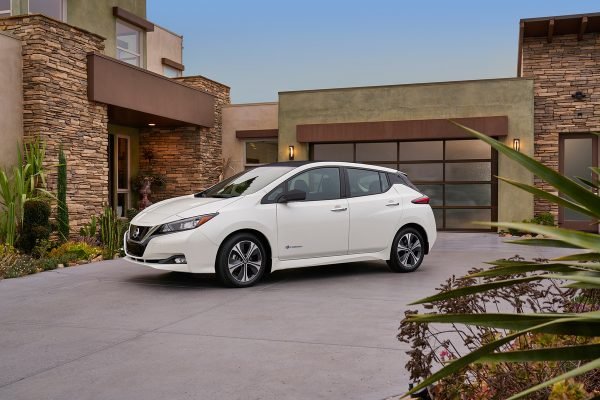
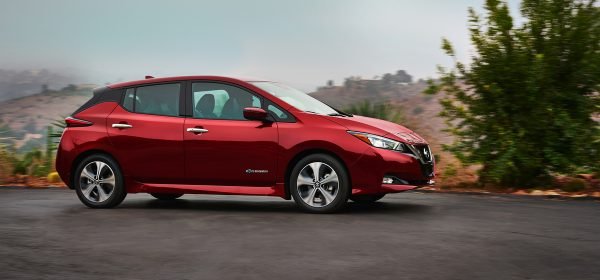
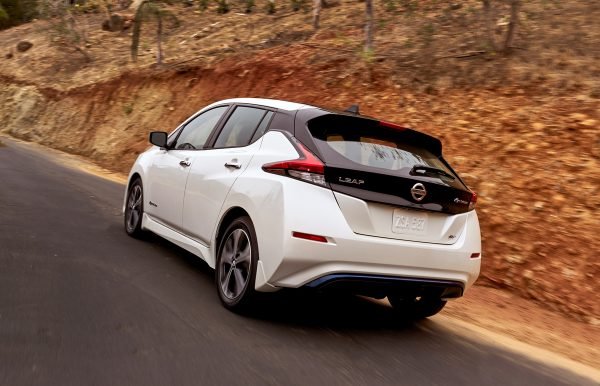
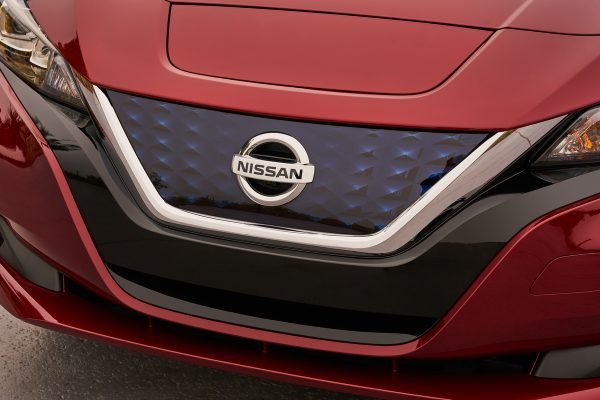
Why the 2018 LEAF raises the bar
[UPDATE: This article was updated 9/22/17 to correct information about the charge cable.]
The design direction of the new LEAF is a great improvement over the existing car. The faux grille has a blue 3D patterned effect matched by blue trim on the rear fascia. The taillights and floating roof design recall the elegant looking Nissan Murano. I must admit that I was as disappointed as the next guy that the 2018 Nissan LEAF reveal confirmed the 40 kWh battery with its 150 mile range. But I was also heartened by the confirmation of a bigger battery along with a more powerful motor coming on the 2019 model year. And that is why LEAF 2.0 raises the bar. Tesla is no longer the only maker that will offer models with different battery pack sizes. In Tesla’s case, you can order a Model S with a 75 kWh battery or a 100 kWh battery. Big or bigger. The price tag on that Tesla comes in at over $70,000 on the low end. The LEAF, the everyman EV, is expected to offer much more affordable 40 kWh or (expected) 60 kWh options. Plus, the 2018 LEAF looks significantly better than it’s outgoing counterpart. So grab a beverage and I’ll walk you through this (mostly) new EV for the masses. Here’s a quick video to whet your appetite.
But the Bolt goes 238 miles!
Yes. Yes it does. It also has a starting price of $36,620. Which is exactly $6,630 more than the $29,990 starting price of the LEAF. Add destination charges of just under $900 to both. I’m guessing that the bigger battery and more powerful motor promised within the next year or so for the LEAF should come in comfortably close to or under that difference. The range, though, is only part of the issue. Chevy chose to go with the SAE combo fast charge port. LEAF can fast charge in over forty percent more places currently. According to the U.S. Department of Energy Alternative Fuels Data Center there are currently 1,158 SAE combo stations with 1,398 charging outlets. The same source currently shows 1,641 CHAdeMO stations with 1,991 outlets. Both styles of connections will continue to grow and many new DC fast charge (DCFC) stations will offer both options, so that divide will narrow. Eventually. Oh, and if you don’t really need that additional range, Chevy doesn’t have a shorter range version available at a lower price.
But the Model 3 starts at $35,000!
If only you could buy one for that! The first thirty deliveries were to employees or investors, and they all came with a price tag of $49,000 or more. All initial production is rolling off of the Tesla assembly line with the big battery and premium options. Tesla isn’t really saying how big that bigger battery is, but with a 310 mile range and based on EPA testing, people smarter than me say that it’s probably around 80 kWh. The smaller battery offers a 220 mile range so it’s somewhere around 60 kWh, perhaps a little less. But Tesla will not even start building that car until November, and they’re not saying anything about how many they’re likely to make. You may recall that the 60 kWh Model S was never really made in quantity and only a handful of 40 kWh cars exist. So don’t hold your breath waiting for the $35,000 version. But if you check off all of the options on the currently available order list you can get your Model 3 up to around $60,000. A performance trim level will be available next year adding even more to that total. Not really the affordable Tesla that many were waiting for.
But what about the 2018 Nissan LEAF?
Alright, now that we’ve got two of the big questions out of the way, let’s dive into the 2018 Nissan LEAF. Let’s start with the things that did not change. It still has three trim levels – entry S, SV, and top trim level SL. It does have more horsepower this year, up from 107 to 147. More impressively, torque improves from 187 lbs-ft to 236 lbs-ft. That should provide quicker acceleration. We’ll find out when we drive it. There is also an all new analog speedometer.
Remaining range and battery state of charge are also represented differently.
According to NissanUSA.com (where you can configure the car for yourself) the $29,990 S will have limited availability and has two option packages available. The charge package for $1,590 throws in a 120 V/240 V charge cable and quick charge port. That additional charge cable is an auto-switching 240 V unit with a 120 V adapter. According to the label it operates at 12 amps when plugged into 120 V and 30 amps when plugged into 240 V. The 240 V plug is a four-prong, fifty amp, NEMA 14-50R connector. Here is a picture for the geeks.
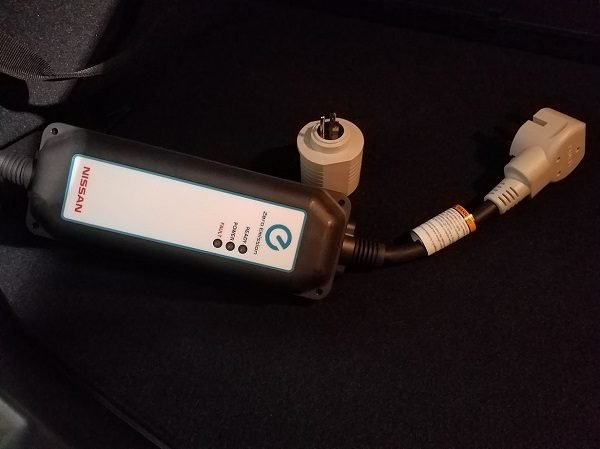 All S and SV trim level LEAFs will still come with a 120 V charge cable as standard equipment with this upgrade cable replacing it as noted above or below.
All S and SV trim level LEAFs will still come with a 120 V charge cable as standard equipment with this upgrade cable replacing it as noted above or below.
There’s also an all weather package that includes heated outside mirrors, rear ventilation ducts, heated front seats and steering wheel for $450. So a fully optioned S comes in at $32,030. New standard features included on the S this year are automatic emergency braking, Apple CarPlay and Android Auto. S trims get 16-inch steel wheels and gray cloth interior. The S also gets Nissan’s new e-Pedal which I will talk more about a little later.
The volume SV model starts just above that at $32,490. Additional features included standard on the SV are 17-inch alloy wheels, Intelligent Cruise Control and a quick charge port. The SV also has an all weather package available but at a higher price of $900. The additional $450 over the S price gets you a more efficient hybrid heater system. Finally, the Technology Package throws a bunch of tech stuff (and not so tech stuff) your way. Included are: 120 V/240 V charge cable, electronic parking brake, LED headlights and daytime running lights, high beam assist, auto-dimming rear view mirror with HomeLink universal garage door opener, a new 6-way power driver’s seat with power adjustable lumbar, automatic emergency braking with pedestrian detection, blind spot warning, rear cross traffic alert, Intelligent Lane Intervention, and the newest tech – ProPILOT Assist. I’ll talk about that in a bit.
The top trim SL starts at $36,200 and has only one option – the technology package. Upgrades from the SV include the 120 V/240 V charge cable, blind spot warning, light gray or black leather-appointed seats, Bose audio, and LED headlights with LED daytime running lights. The SL also includes what Nissan calls Intelligent Around View Monitor, which has four cameras mounted around the car that give you excellent visibility when parking. Basically, most of those same features that you get with the SV tech package. The SL tech package ($650) provides an electronic parking brake, high beam assist, automatic emergency braking with pedestrian detection, Intelligent Lane Intervention, and ProPILOT assist. Which means a fully loaded 2018 Nissan LEAF SL is just a bit more than the entry level Bolt.
What is an e-Pedal?
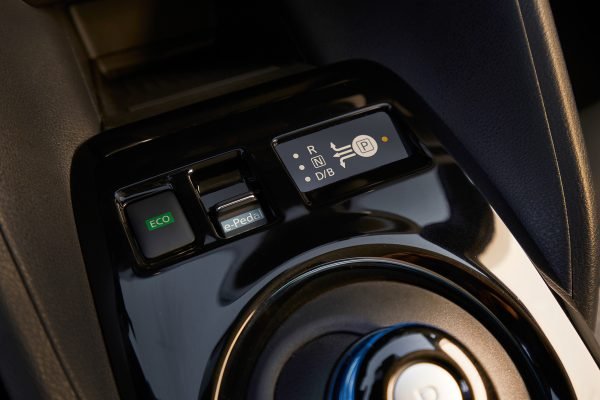
e-Pedal switch
Simply put, the e-Pedal allows one pedal driving. Step on the pedal to speed up. Lift your foot to slow down. In addition to providing a much more aggressive brake regeneration capability than is currently available, this can actually apply the brakes just as if you were stepping on the brake pedal bringing the car to a complete stop. And yes the brake lights will come on, even though you didn’t touch the brake pedal. For those that desire less aggressive brake regeneration, Nissan still offers the normal Drive mode and Brake mode (and ECO mode) that have been a part of LEAF for years. With these various drive modes the driver can select the right mode for each unique driving situation. You might not want aggressive regen on the freeway but you could engage the e-Pedal in around town driving. Tailor your drive mode for the moment.
2018 Nissan LEAF ProPILOT Assist
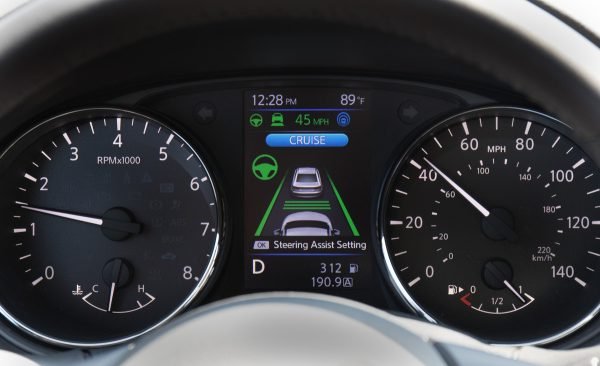
ProPILOT Assist Display (Non-LEAF)
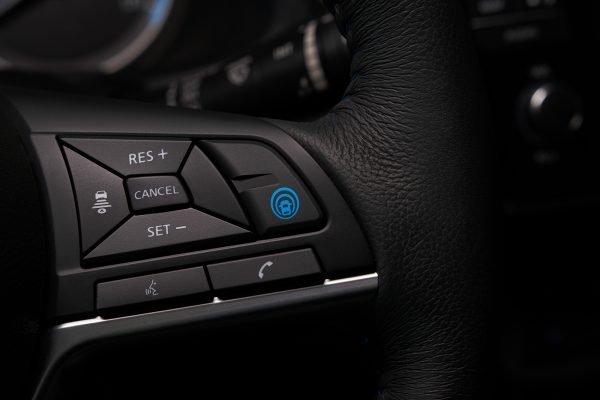
ProPILOT Assist button
This is where we get into the beginnings of autonomous driving technology. Nissan is careful to label the technology driver assist, not self-driving technology, although the company is moving in that direction over the next several years. I’ve had the opportunity to drive a car with this technology and it’s pretty impressive. Here is a video if you prefer watching videos.
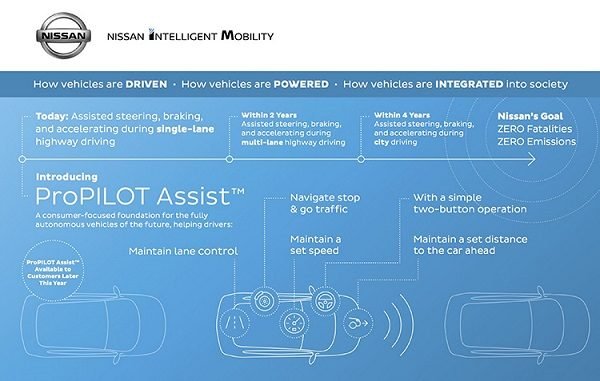
ProPILOT Assist is single-lane driving assistance. That is, press a button to turn the system on. Press another button to set your speed once you’ve reached your target speed. You may adjust your following distance with the press of a third button. Once engaged, the system uses a camera mounted ahead of the rear view mirror to look for the lane markers on the road. If it cannot clearly see these lane markers, the system will not engage. That’s it. When engaged, the vehicle will now speed up and slow down based on the traffic ahead of it. Steering assistance will keep you between the lane markers. Nissan states that it is a hands-on driver assist system rather than a self-driving feature. Indeed, sensors are built into the steering wheel and if you remove your hands for an extended period of time you will receive a visual warning on the dash, followed by an audible chime that beeps slowly, then faster, before disengaging the system.
Looking to model year 2019
Nissan rarely comments on future vehicle technology. The fact that they state the availability of key features right up front is to counter the argument that it won’t go as far as the Bolt or Tesla Model 3. While this is true today, it likely will not be true next year. And today it costs significantly less than either of those two. Nissan has also said that the 2019 LEAF will have a high-power version available for the 2019 model year. While I don’t know that anyone would consider the LEAF to be a performance car, the fact that Teslas are quick certainly works to their advantage. Having a quicker LEAF that looks better than the current car (and arguably, the Bolt) will have appeal for many.
With the car being released in the Japanese home market first, it looks like they are getting some tech that we are not seeing in the early US market cars. The Japanese reveal shows self-parking technology that hasn’t been talked about for US built LEAFs. This is likely a feature that we will see at some point down the road. The home market also gets a pale metallic green LEAF that is not part of the US color palette. That could change in a year.
In summary
After being in the car at the San Diego National Drive Electric Week event, and upon a careful reading of Nissan’s available info, I can confidently say that this is a significant redesign of the existing platform. Regarding the chassis, the company says “Nissan engineers enhanced the car’s chassis for better stability.” They did not say this is an all new car. In essence that means the passenger compartment is the same though it offers an all new dash, seats, and improved materials and features. Virtually the whole of the exterior gets new sheet metal. For this, many of us are happy.
Which brings me to my final point. The (hopefully) 60 kWh battery will have significant chemistry and packaging improvements to fit inside a case that will be very similar in size to the battery case sitting under the car now. Perhaps that is one of the reasons why the one year delay. They need to be able to see how much juice they can fit in a box that size. It needs to be enough to provide a 200 mile EPA range to please the non-EV masses. The question is – which one will you get? Will you get the 40 kWh LEAF now or wait for the larger battery, higher power version coming next year?


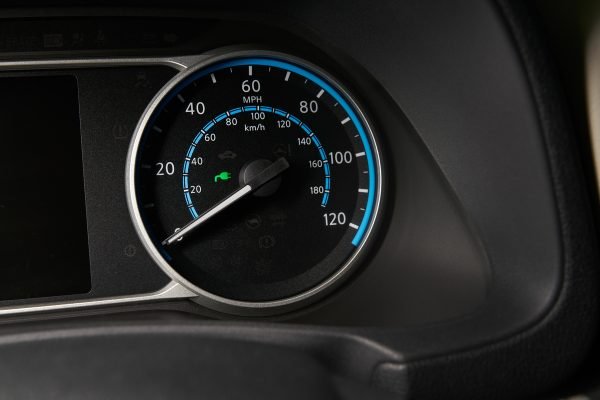
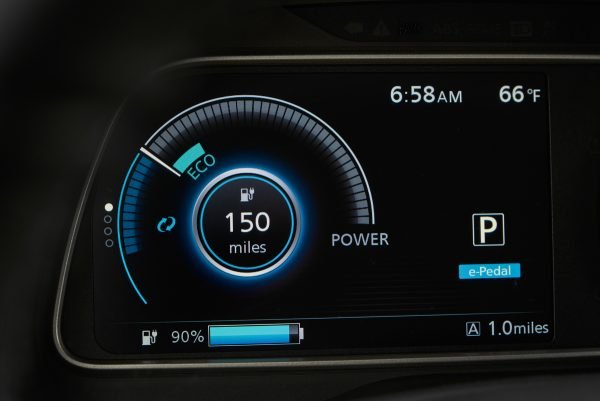
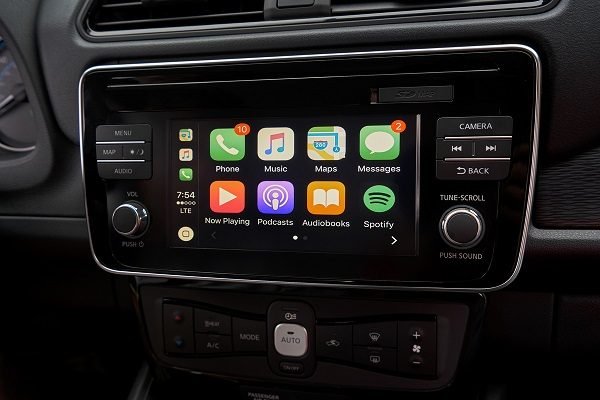
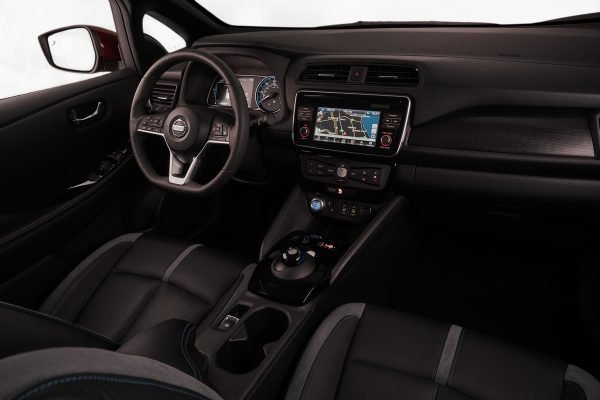
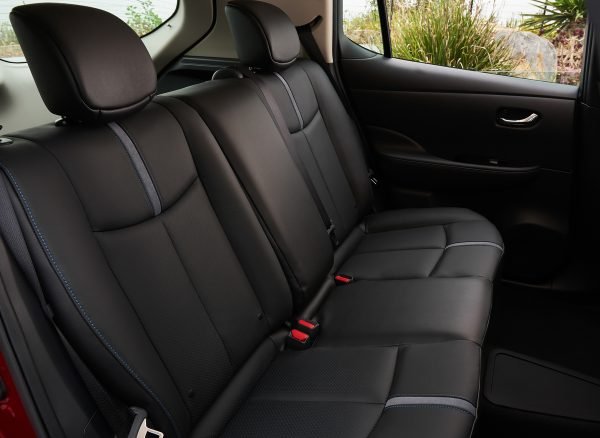
Thanks for the review.
I’m five months into my first EV, a 2014 Leaf SV. For a local car it’s brilliant, especially at the price I paid.
I’ve already determined I will never purchase another ICE car. My goal is to run our 2007 Prius for another 5 year then find the best deal on a used long-range EV. To go totally EV I need one of our cars to be able to cover 150-mile range, something the new Leaf may do in good weather. But having a 60-kWh pack is ideal.
Time will tell if the 40 kWh packs will hold up without thermal management. While the Leaf has bested the Bolt in driving assist technology, Chevy and Tesla seem to lead in battery technology. I agree a Telsa M3 is a pipe dream at the Leaf/Bolt price point. I’m note sure if I want another sedan. I’ve come to appreciate the utility of hatchbacks.
Jim – Welcome to Living LEAF. The small crossover segment is the best selling category of vehicle in the US right now because of the great utility and fuel economy. A 200-mile range LEAF could be an amazing vehicle for a large segment of the population. When the big battery LEAF arrives and Tesla finally does produce an affordable EV (Model Y) we could start to see things transition in a much bigger way.
I received my 2018 leaf last week (I am in Japan where deliveries have already started). So far I am very impressed (it is my first EV) and I am loving the leaf. Also e-pedal is great (except for parking where it is better to have it disabled), now I can not go back to regular accelerate and break pedal driving.
I was a bit worried about the range, but I think it is about right as I would stop for a rest anyway after 250km and range in warmer weather will easily go over 300km as I am getting around 280km of city driving in December.
I am wondering whether the new 60kw battery will fit into the 40kw leaf and if we will be able to upgrade in a few years if we feel the need. I already made up my mind that it probably wont be possible, but I hope I will be wrong and Nissan will give us the choice to upgrade in the future.
Chinaski – Welcome to LivingLEAF. I’m glad to hear you’re having a great experience so far with your new LEAF. The 24 kilowatt-hour battery cannot be replaced with the 30 kilowatt hour battery, so I would suspect that the 40 kilowatt hour battery will not be able to be replaced with the 60 kilowatt hour battery.